How Much Time Should I Spend With My Indian Ringneck?
The amount of time you should spend with your Indian ringneck parakeet each day depends on the individual bird’s age, personality and bonding progress. However, most experts recommend dedicating 2-4 hours per day of direct one-on-one interaction for a happy, healthy pet bird.
Indian ringnecks are highly social flock birds that require regular attention and enrichment. Without adequate human bonding time, these clever parrots are prone to issues like screaming, feather plucking, aggression and self-harm behaviors. Providing the right balance of quality interaction is key.
Morning Routine
Starting the day with some quality time is essential for bonding with your Indian ringneck and setting a positive tone.
Wake Up Call – Greet your bird first thing when you wake up to get their day going on the right foot. Speak or whistle cheerfully to say good morning. Indian ringnecks are often active first thing in the morning so this is a good time to start interaction.
Breakfast Bonding – Eat your own breakfast with your ringneck’s cage open so they can wander and explore under supervision. This supervised out of cage time first thing allows them to perch near you while you enjoy your meal. Offer Chop or fresh fruits and veggies so you can eat together.

Morning Training – After breakfast, engage in 5-10 minutes of light training or handling. Work on reinforcing basics like step up, targeting or recall commands. Alternatively, simply handle your parrot gently, speaking reassuringly and getting preening time in. This small morning session will get your bird stimulated and ready to go.
Cage Cleaning – While your Indian ringneck is occupied with breakfast and morning training, take the opportunity to wipe down their cage, change water and food dishes, and make sure everything is clean and inviting for when they return. Proper cage hygiene will set them up for success.
Toy Rotation – Add one or two new toys into the cage like foot toys, treat puzzles or shredders to keep the environment interesting. Rotating new toys daily provides mental stimulation.
Starting the morning this way allows quality interaction first thing and gets your Indian ringneck set up for an enriching day ahead. The consistency also establishes a comforting routine they can look forward to daily.
Read Next: What Size Cage Does an Indian Ringneck Need?
During the Day
Allow periods of out-of-cage time during the day for your Indian ringneck to interact with you while you work, relax or go about your normal routine. Rotate new foot toys, shredders and puzzles into their cage to keep them occupied and mentally stimulated while you are busy.
Evening Routine
The evening hours are a great time for focused bonding, training, and winding down with your Indian ringneck. Here are some relaxing yet engaging activities to enjoy before bedtime:
Focused Training – Take advantage of your bird’s natural spike in energy at dusk for slightly longer training sessions – aim for 15-20 minutes if possible. Practice new tricks like waving or nodding, or work on chaining behaviors. The mental workout will satisfy their active evening mood.
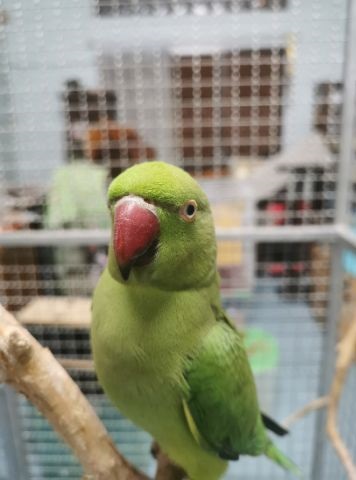
Cuddling and Chatting – Indian ringnecks form very close bonds with owners, so take some time to cuddle, relax and chat with your bird before bed. They’ll enjoy perching on your shoulder or chest as you watch TV or read a book out loud. The soothing bonding time is valuable.
Pre-Bedtime Snack – Prepare a foraging-friendly healthy snack you can share with your Indian ringneck right before bed. Some good options are chopped fruit, bean sprouts, cooked quinoa, or nutritious birdie bread. This pre-bedtime treat is great for bonding.
Lights Off – Indian ringnecks need 10-12 hours of undisturbed sleep in a quiet, dark environment at night. After your evening routine, make sure to cover their cage when it’s time for bed. The consistency and proper sleep will keep their schedule on track.
Morning Prep – Before turning in yourself, prepare your Indian ringneck’s cage for an easy start to the day tomorrow. Refresh food and water, wipe surfaces, and consider adding a new toy or foraging activity first thing in the AM. This sets you both up for success when the sun rises.
Winding down each evening with this relaxing routine cements the bond with your Indian ringneck and gets their body clocks ready for a fulfilling day to follow. The consistency also provides comfort.
Activities to Enjoy Together
There are endless engaging activities to enjoy during your daily Indian ringneck play and training sessions. Rotate through these options to keep things exciting:
- Obedience and trick training
- Foraging for hidden treats
- Playing with new toy rotations
- Chatting and whistling together
- Sharing healthy fruits, veggies and nutritious homemade snacks
Signs Your Bird Needs More Time with You
Be on the lookout for these behaviors that signal your Indian ringneck may need more interaction:
- Increased screaming and vocalizing
- Aggressive behaviors like biting or lunging
- Destructive chewing on cage bars
- Stress-induced feather plucking
If you notice these issues emerging, try adding extra bonding sessions throughout the day to see if they improve. Consulting an avian vet is also smart to rule out underlying illness.
Read our Article: Can Indian Ringnecks Live With Other Birds?
Conclusion
While 2-4 hours per day is a good baseline, focus more on engaging fully during your time together. Mix up activities frequently, respond to cues when your bird is bored, and provide the mental enrichment Indian ringnecks thrive on. With the right balance of quality interaction, your feathered friend will live a happy, healthy life!

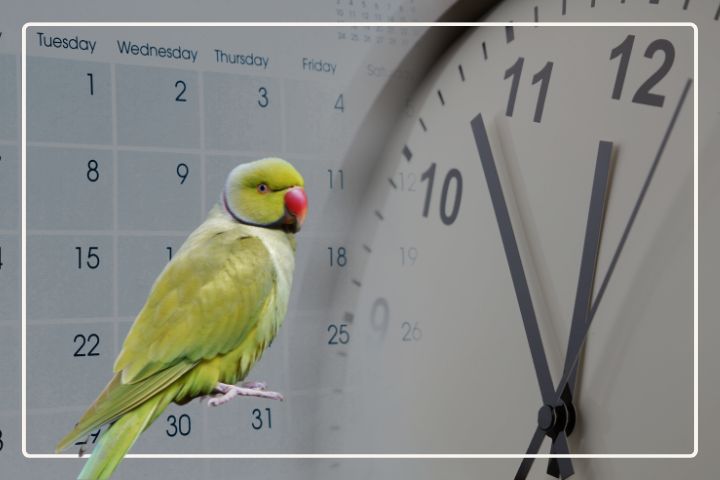
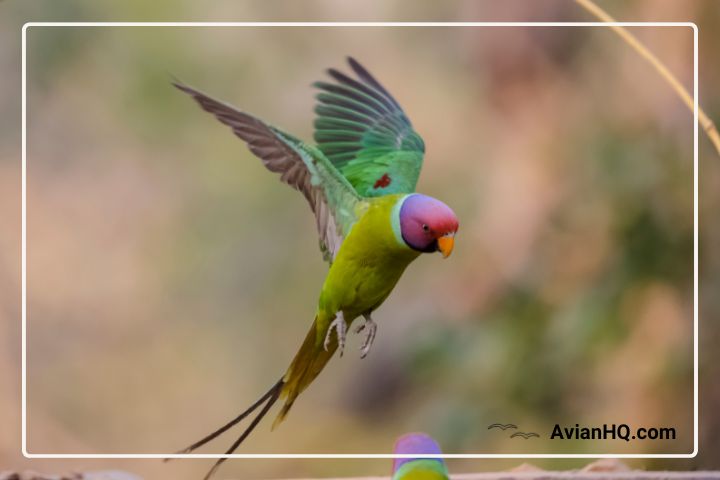

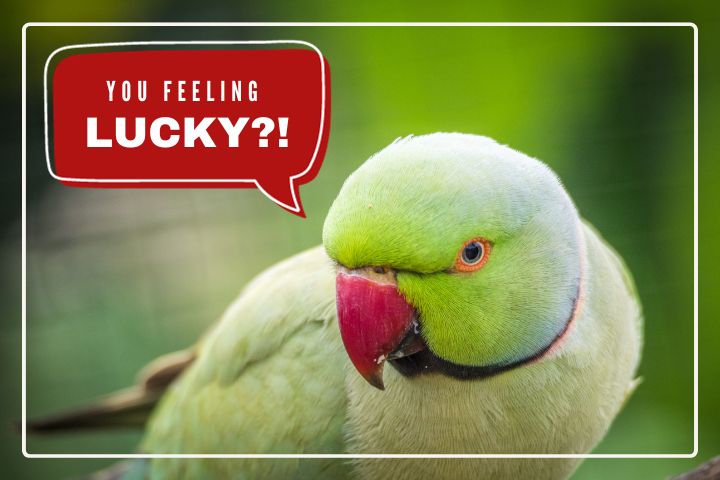
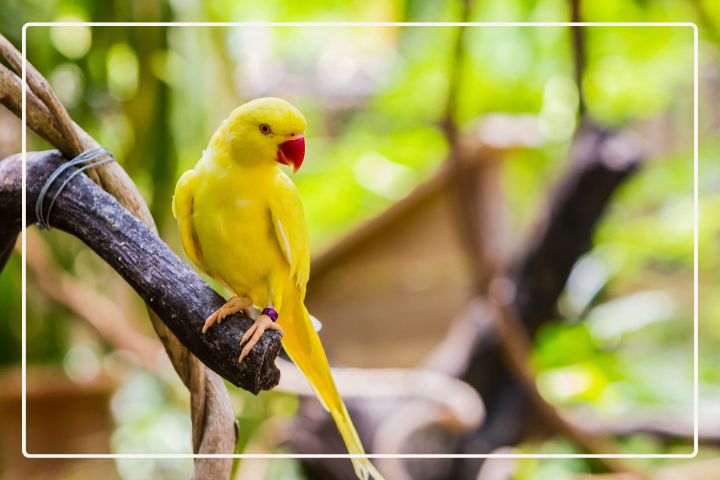

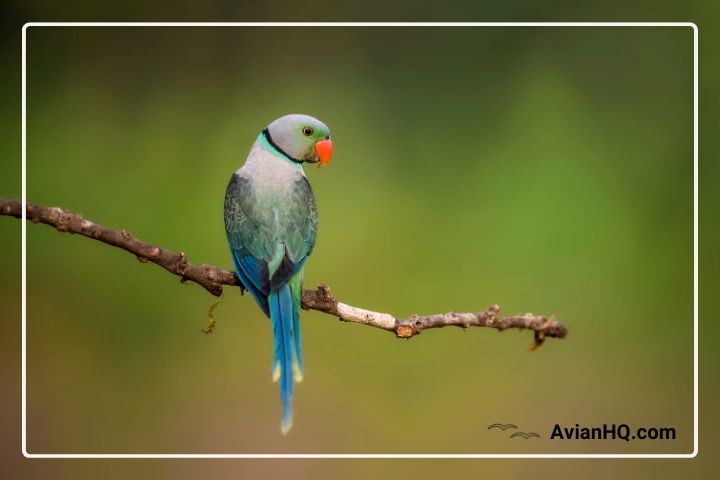
Thank you for sharing with us, I believe this website truly stands out : D.